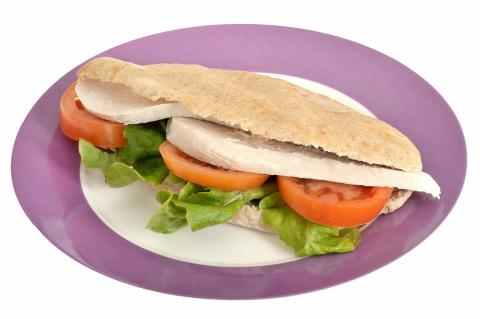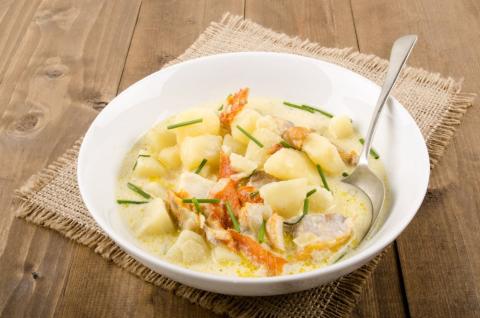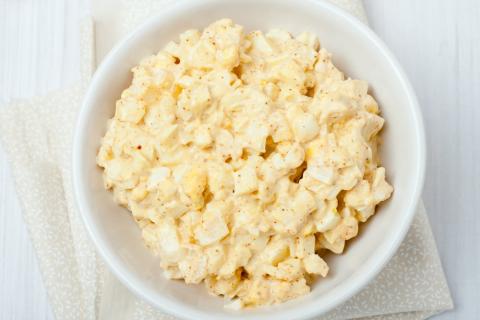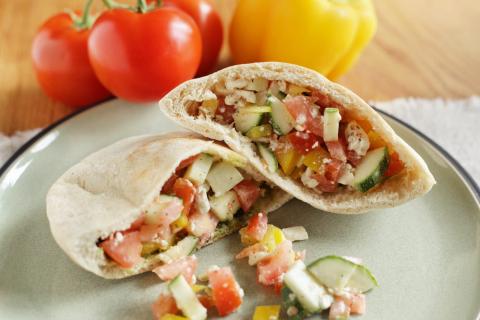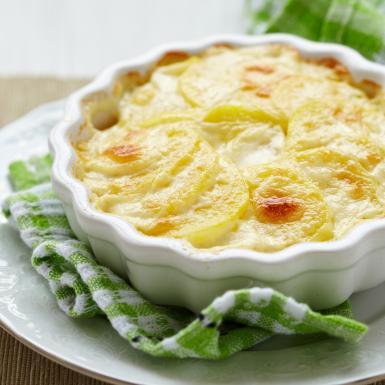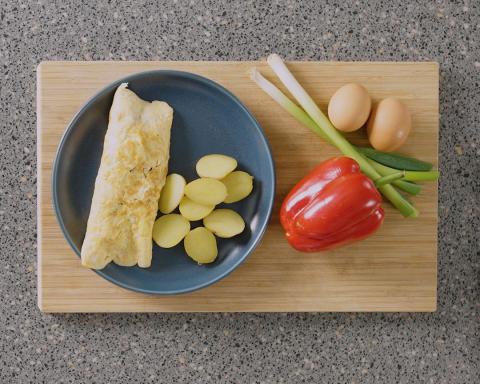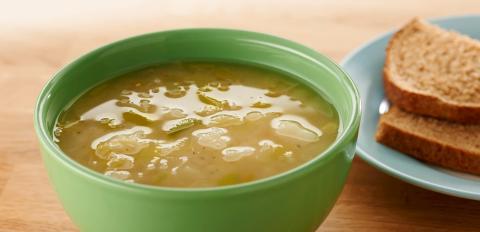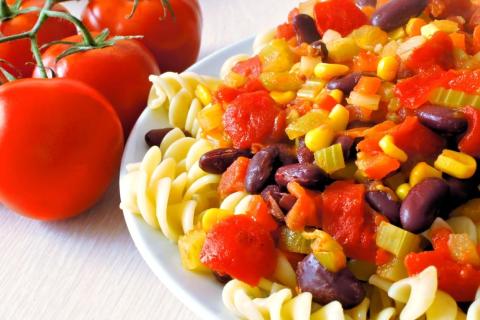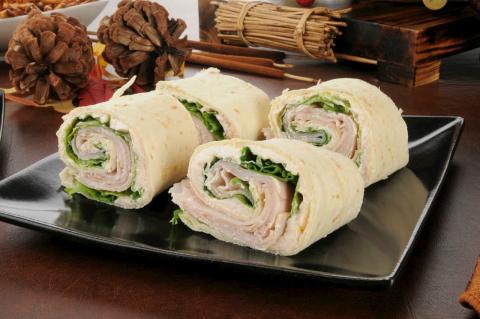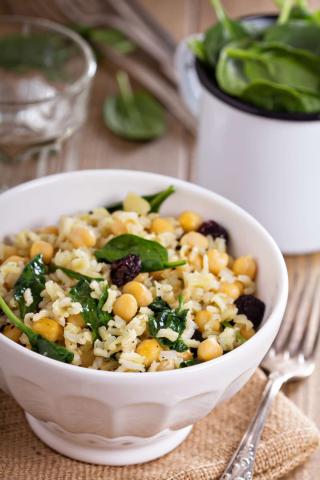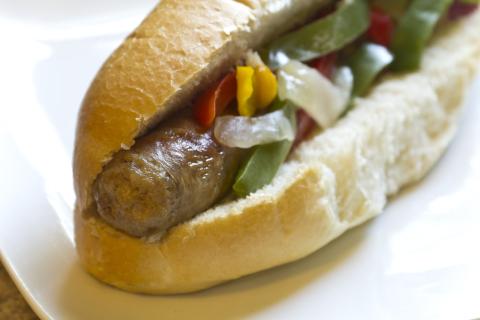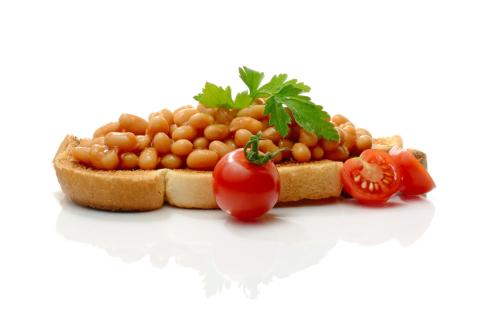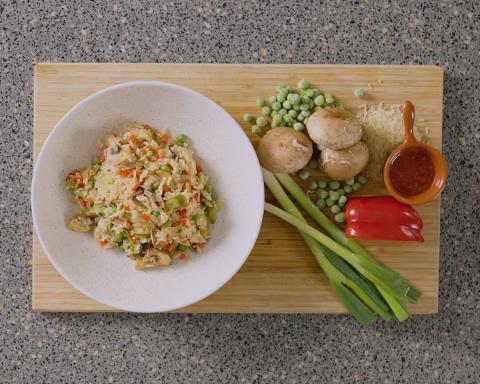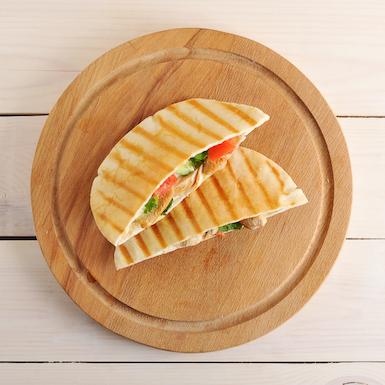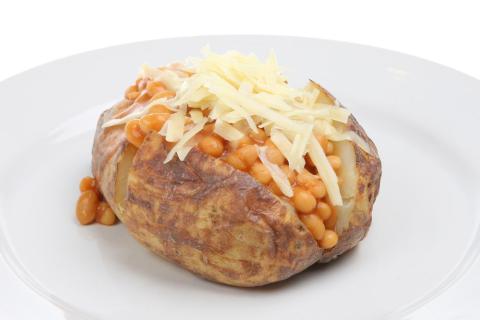- 3 Tablespoons (50g) Broth (Soup) Mix
- 2 (14g) Vegetable Stock Cubes (use reduced salt when possible)
- 2 Pints (1L) Water
- 1 Medium Sized (150g) Onion
- 2 Medium Sized (160g) Carrots
- 1 (160g) Leek
- ½ (50g) Turnip
- 1 Pinch Black Pepper to taste
Ingredients
Allergy Disclaimer
Always check the label of each ingredient for allergy warnings.
Method
- Unless you are using quick cook broth mix you will need to soak it overnight (10 hours). Place the broth mix in a bowl and add the water until just covering the mix then leave to soak.
- Add boiling water and stock cubes to a pan and once its dissolved add the broth mix. Bring to boil, then simmer for 1 hour.
- Finely chop the onions and leek and add to pan, simmer for 20 minutes.
- Peel and grate the carrots and turnip then add to pan and simmer for a further 10 minutes.
- Add pepper to taste and serve once the vegetables are soft.
Time Saver Tips
Soup can be prepared in advance and kept in the fridge to be used within 24 hours. Or you can pop it in the freezer for later. Look for a quick cook broth mix to avoid soaking overnight.
Cost Saver Tips
You could swap the vegetable stock cube for reduced salt stock granules if that’s what you have in – just check the label for the amount you’ll need for 1 litre of water. Why not try batch cooking this soup? You could even freeze some so it’s ready for an easy meal any time – just cool it before putting it in the freezer and make sure it's steaming hot when you reheat it. You can use any vegetables in this, for example celery or potatoes – look for whatever’s on offer or available in the fridge to pop in the pot. If you don't have a grater you can chop the turnip and carrot into small cubes instead. If you don’t have broth mix, you could always use up any dried lentils, pearl barley or split peas you have at the back of your cupboard.
Tips for Kids
If your child isn’t too keen on vegetables why not blend them for a smoother consistency and to make them less obvious? Your wee one will love to help you prepare and chop the softer vegetables (with a table knife). After helping make it, they might even be more likely to want to eat it! Letting them choose which vegetables to use can also help them to clear their plate.
Nutritional Information
Based on a single serving of 340g (% of an adult's reference intake)
Energy
76 kcals ( 4 %)
323 kJ ( 4 %)
Fat
0.0 g ( 1 %)
Saturates
14.3 g ( %)
Sugar
5.7 g ( 6 %)
Salt
1.5 g ( 25 %)
Detailed nutritional information
| Per 100g | Per 340g serving | |
|---|---|---|
| Energy Kcals | 22 | 76 |
| Energy Kj | 95 | 323 |
| Protein | 1 g | 3.5 g |
| Total Fat | g | g |
| Saturated Fat | 0 g | 0.0 g |
| Carbohydrates | 4.2 g | 14.3 g |
| Total Sugars | 1.7 g | 5.7 g |
| NSP Fibre | 1.3 g | 4.6 g |
| Sodium | 177 mg | 603 mg |
| Salt | 0.4 g | 1.5 g |
Find out about nutritional labelling
Nutrition labels on the front of packaging
- Most of the big supermarkets and many food manufacturers display nutritional information on the front of pre-packed food.
- Front of pack nutrition labels provide information on the number of grams of fat, saturated fat, sugars and salt and the amount of energy (in kJ and kcal) in a serving or portion of a recipe.
- The labels also include information about reference intakes (expressed as a percentage) which are guidelines about the approximate amount of particular nutrients and energy required for a healthy diet.
- The colour coding tells you at a glance if the food has high (red), medium (amber) or low (green) amounts of fat, saturated fat, sugars and salt.
- The more greens on the label, the healthier the choice
- Amber means neither high nor low, so you can eat foods with all or mostly ambers on the label most of the time.
- Reds on the label means the food is high in that nutrient and these are the foods we should cut down on. Try to eat these foods less often and in small amounts.
Food shopping tips
If you’re trying to decide which product to choose, check to see if there's a nutrition label on the front of the pack. This will help you to quickly assess how your choices stack up. You will often find a mixture of red, amber and green colour coding for the nutrients. So when you're choosing between similar products, try to go for more greens and ambers and fewer reds if you want to make a healthier choice.
 Activities & Play
Activities & Play Behaviour
Behaviour Childcare
Childcare Development & Growing Up
Development & Growing Up Family, Friends & Relationships
Family, Friends & Relationships Feeding Your Baby
Feeding Your Baby Food & Eating
Food & Eating Health & Safety
Health & Safety Mental Health & Wellbeing
Mental Health & Wellbeing Money & Work
Money & Work Online Behaviour & Safety
Online Behaviour & Safety Pregnancy & First Days
Pregnancy & First Days School & Education
School & Education Sleep
Sleep







